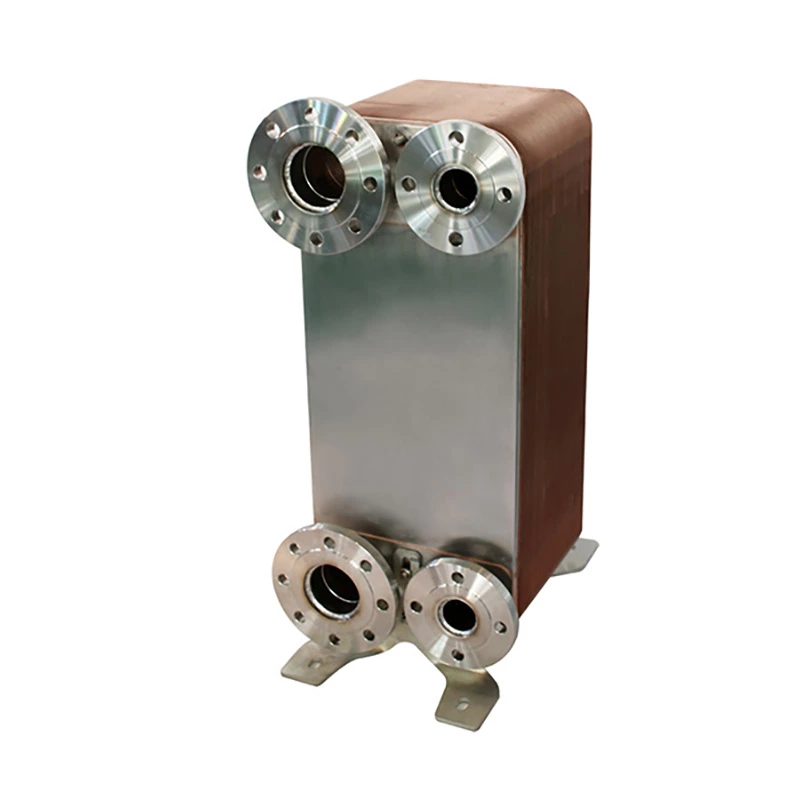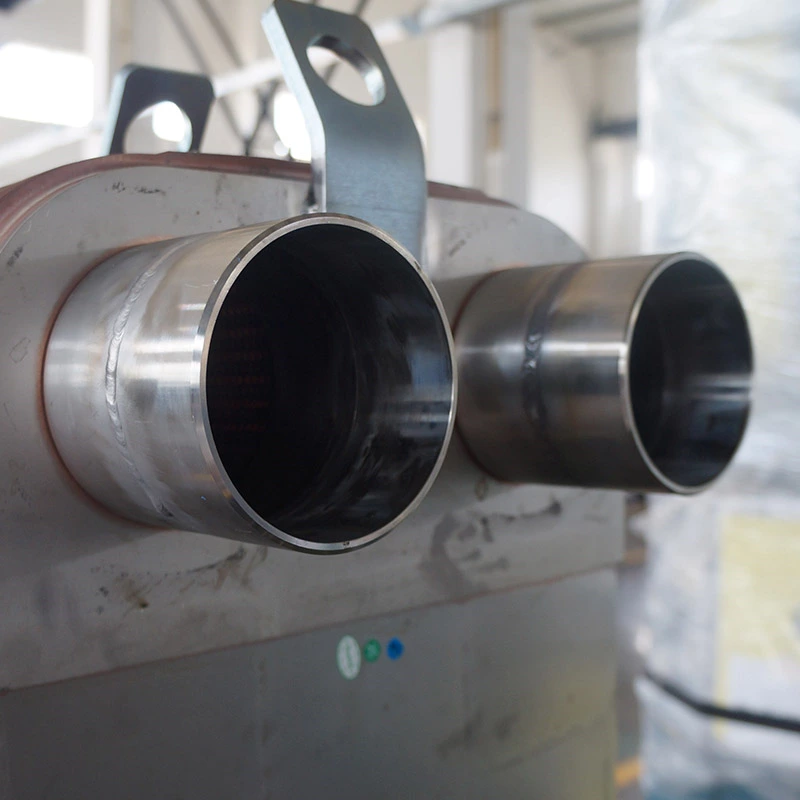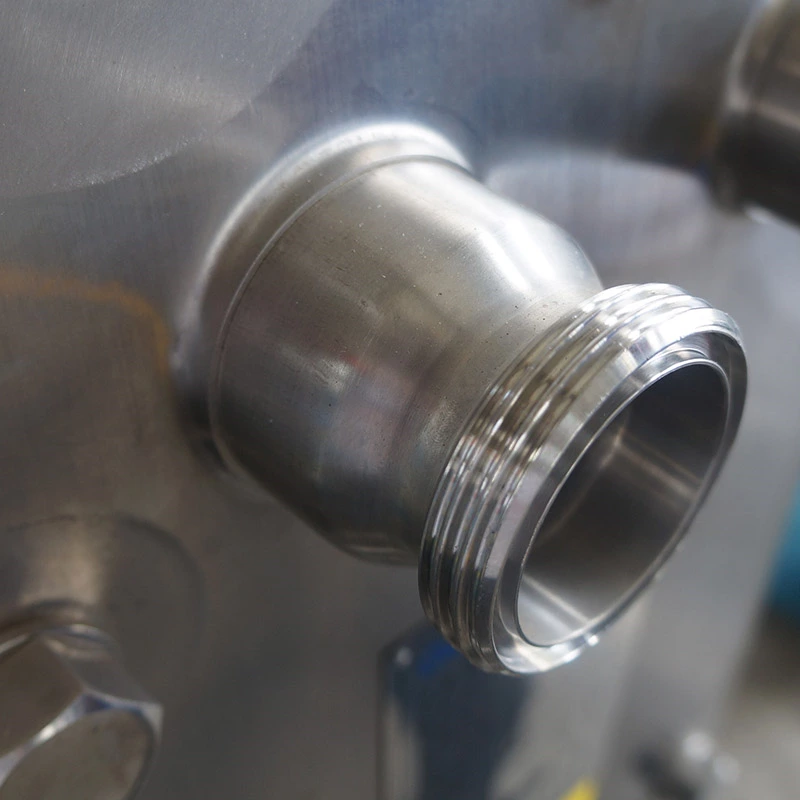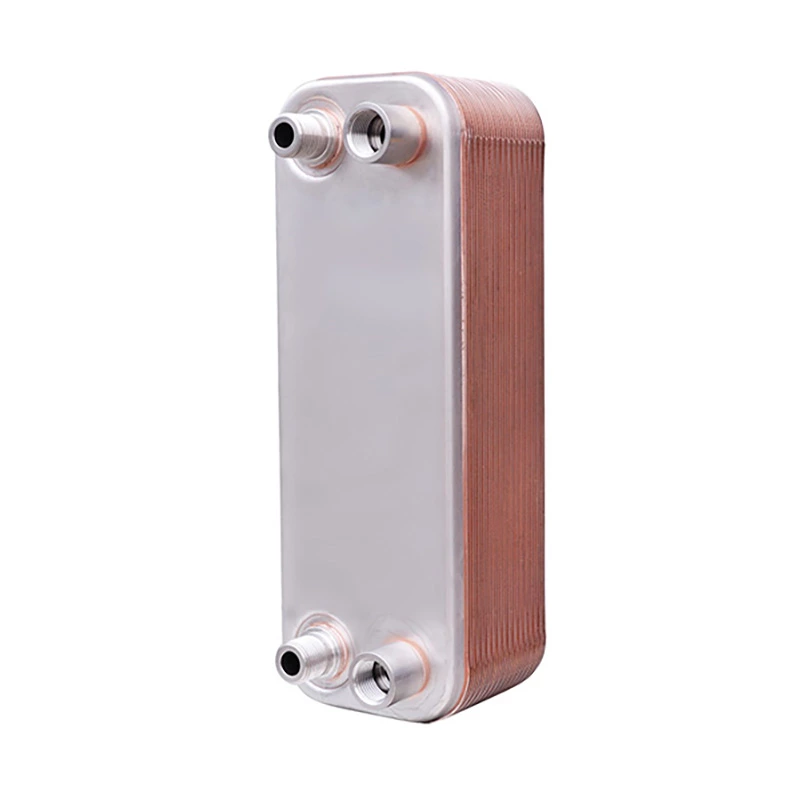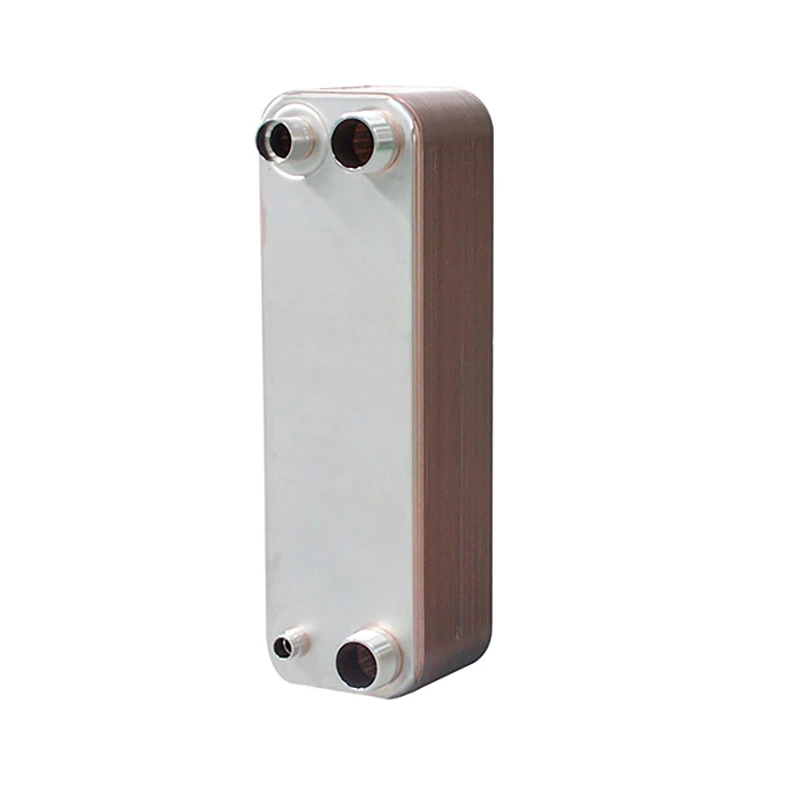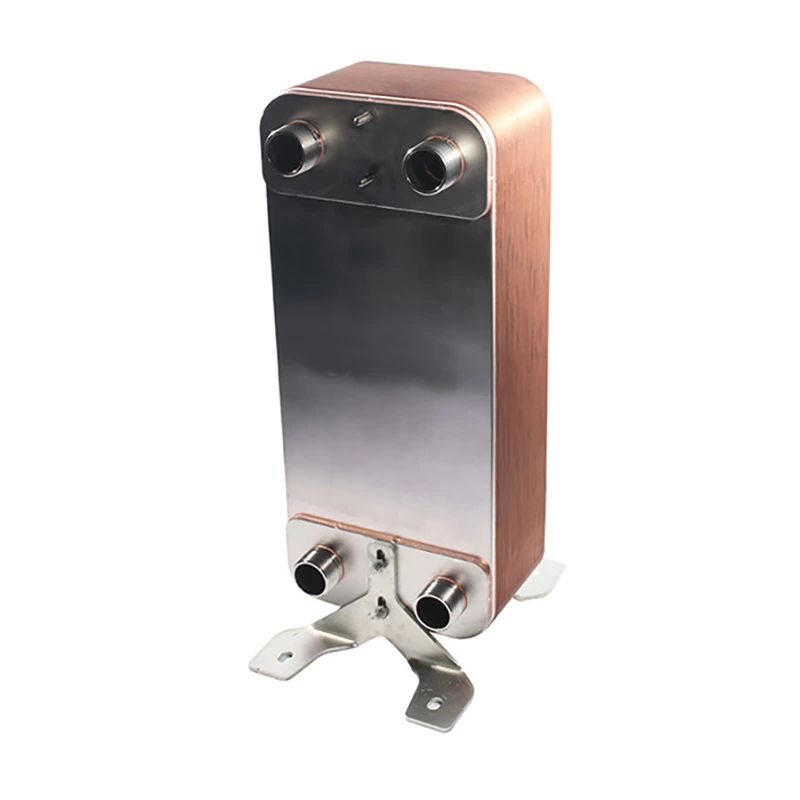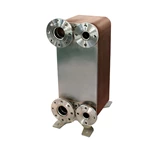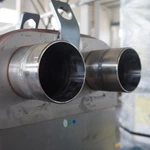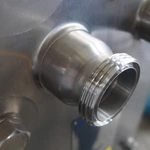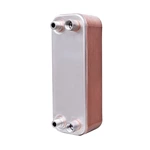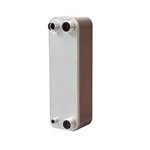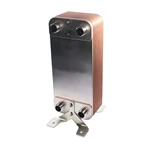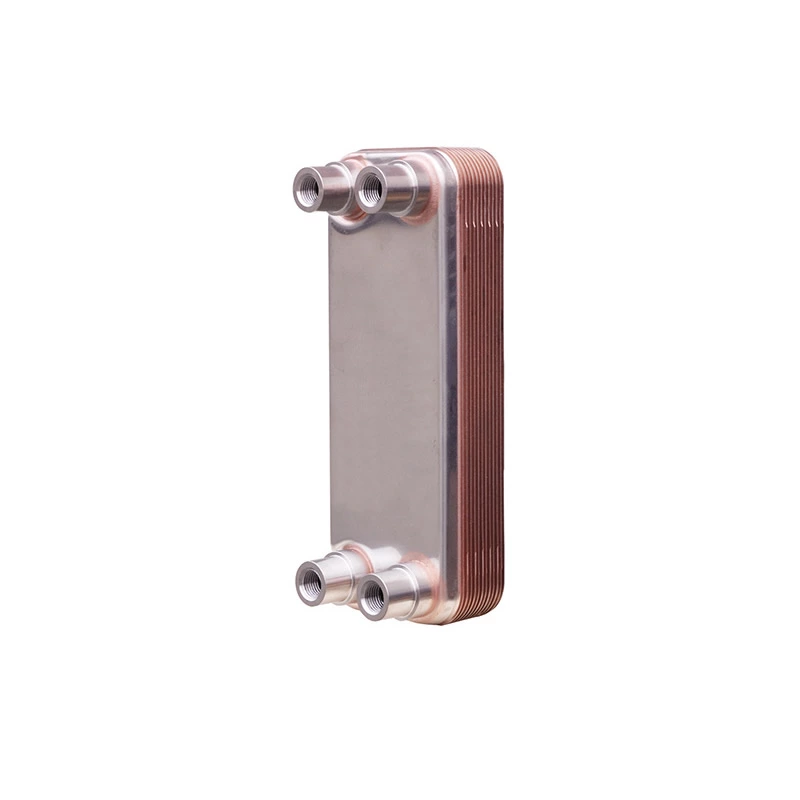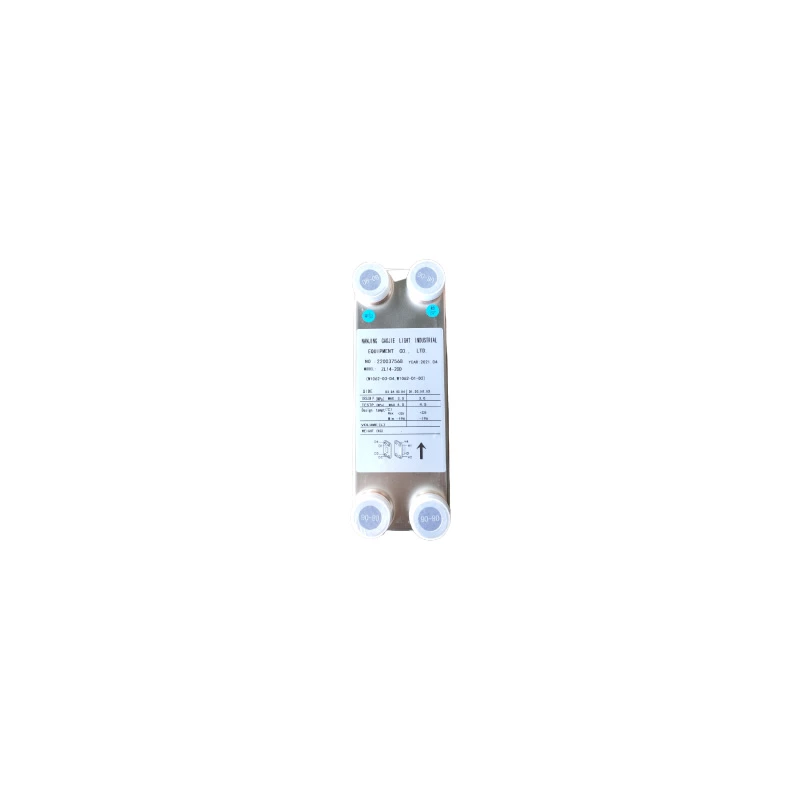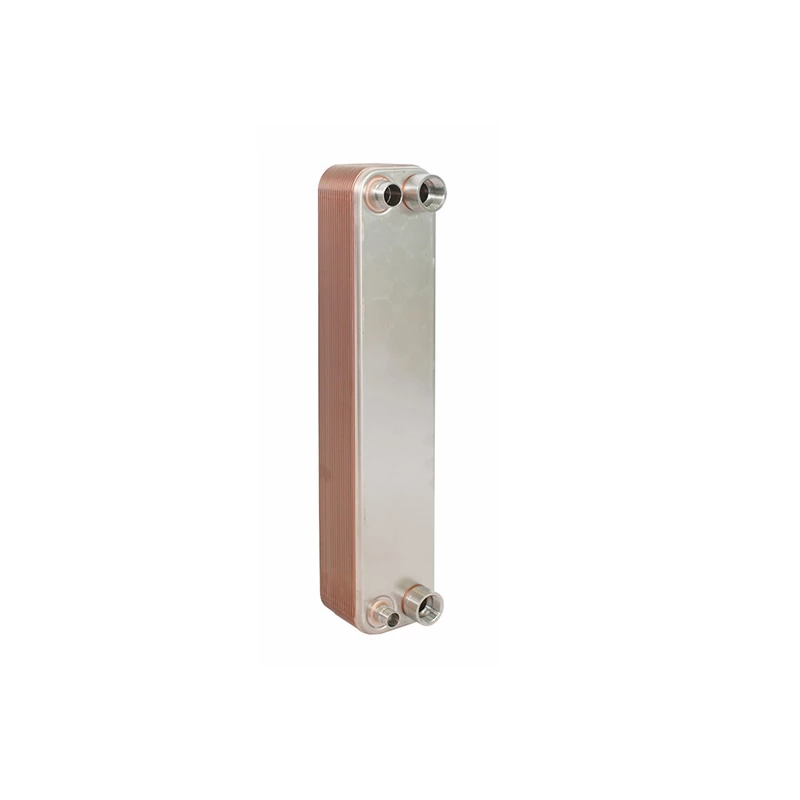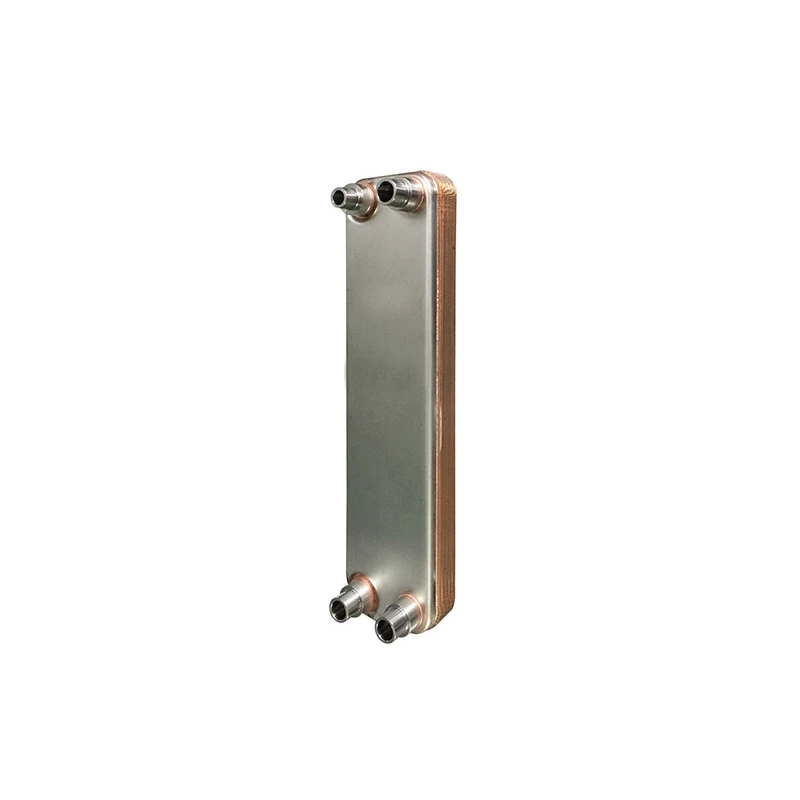Brazed Plate Heat Exchangers GJ200
The brazed plate heat exchanger is formed by permanently connecting multiple layers of stainless steel plates through the brazing process. Its core structure is composed of corrugated plates, brazing materials (usually copper or nickel), and an external frame. The corrugated design between the plates forms complex flow channels, enabling the cold and hot media to flow in opposite or cross directions within adjacent channels, thus achieving rapid heat exchange
Characteristics
High-efficiency heat transfer
The corrugated plate design enables the heat transfer coefficient to reach 3 to 5 times that of shell and tube heat exchangers, significantly enhancing energy efficiency.
Compact and lightweight
Its volume is only 20%-30% of that of traditional heat exchangers, saving installation space.
Pressure and temperature resistance
The brazed structure can withstand a pressure of over 30 bar and a temperature range of -160℃ to 220℃ (depending on the brazing filler metal).
Long service life and maintenance-free
Gasless design avoids leakage risk, and corrosion-resistant materials (such as 316L stainless steel) extend service life.
Versatility
Applicable to liquid-liquid, gas-liquid and phase change heat transfer (such as evaporation or condensation).
